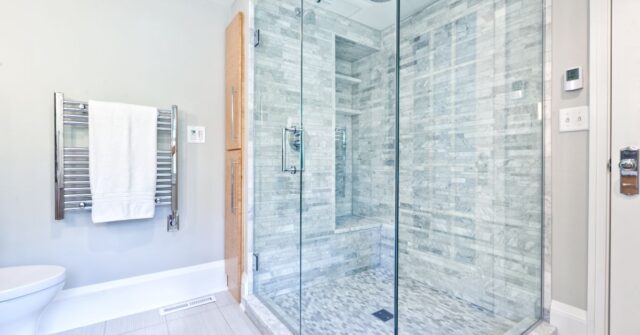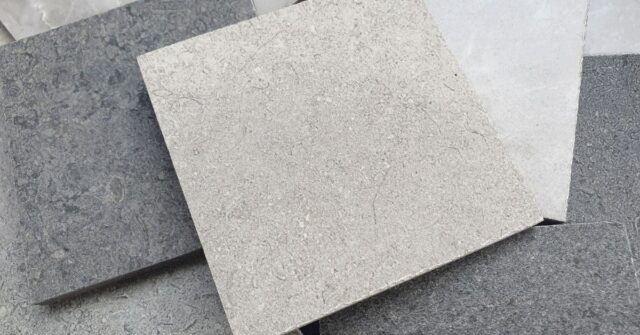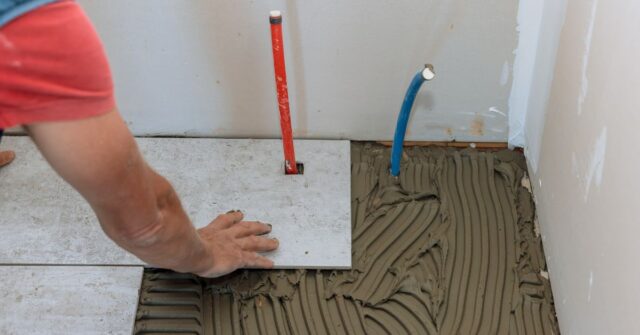Cleaning your bathroom doesn’t need to rely on expensive store-bought products or harsh chemicals.
By creating your own bathroom cleaner, you can achieve a sparkling clean space while saving money and protecting the environment.
This guide will show you how to make effective, eco-friendly cleaners that are safe, affordable, and easy to use.
Introduction
Homemade bathroom cleaners are gaining popularity for good reasons. They combine cost-effectiveness, safety, and sustainability into one simple solution.
By using natural ingredients commonly found at home, these cleaners reduce chemical exposure and support eco-conscious living.
Let’s explore why making your own bathroom cleaner is a smart choice for your home and the planet.

Why Choose Homemade Bathroom Cleaners?
Homemade cleaners offer control over what you’re using to clean your home.
They’re free from the harmful chemicals often found in commercial products, which can irritate your skin, harm the environment, and damage surfaces over time.
Plus, they’re incredibly cost-efficient, using ingredients you likely already have in your pantry.
The Benefits of Eco-Friendly Cleaning Solutions
Switching to eco-friendly cleaners means making a choice that’s better for your family and the environment.
Traditional cleaning products often leave a trail of pollution through their manufacturing, packaging, and disposal processes.
Homemade alternatives eliminate that waste while still tackling tough stains and germs. It’s a small change that makes a big impact.
Cost Savings Compared to Store-Bought Products
Store shelves are lined with pricey cleaners that promise miraculous results. However, these often come with a high price tag and unnecessary extras.
By crafting your own solutions, you can clean your entire bathroom for a fraction of the cost. Even better, you’ll avoid the temptation to buy multiple products when one versatile cleaner can do the job.

Essential Ingredients for Homemade Bathroom Cleaners
The beauty of homemade bathroom cleaners lies in their simplicity. Most recipes call for just a handful of ingredients that are inexpensive and easy to find.
These ingredients are natural yet powerful enough to tackle even the grimiest bathrooms.
Overview of Common Ingredients
Here’s a quick look at the core components you’ll use to create your cleaners. Each plays a specific role in making your bathroom spotless and germ-free.
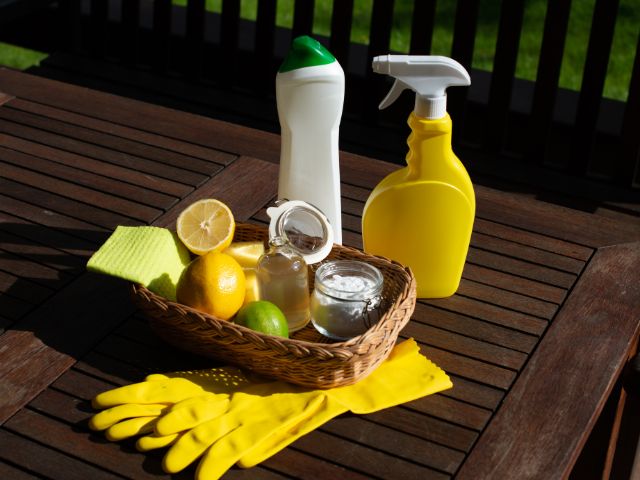
Vinegar: Nature’s Disinfectant
Vinegar is a cleaning powerhouse. It cuts through grease, dissolves mineral deposits, and kills bacteria. Its mild acidity makes it perfect for removing soap scum and hard water stains.
The smell might be strong at first, but it dissipates quickly, leaving a clean, fresh bathroom.
Baking Soda: A Powerful Scrubbing Agent
Baking soda is a must-have for any homemade cleaner. Its gentle abrasiveness helps lift grime without scratching surfaces. It’s also great for neutralizing odours, making your bathroom smell as good as it looks.
Essential Oils: Adding Fragrance and Antimicrobial Properties
Essential oils like tea tree, eucalyptus, and lavender do more than smell good. They have natural antibacterial and antifungal properties, enhancing your cleaner’s effectiveness.
Plus, they let you customize the scent to your liking.
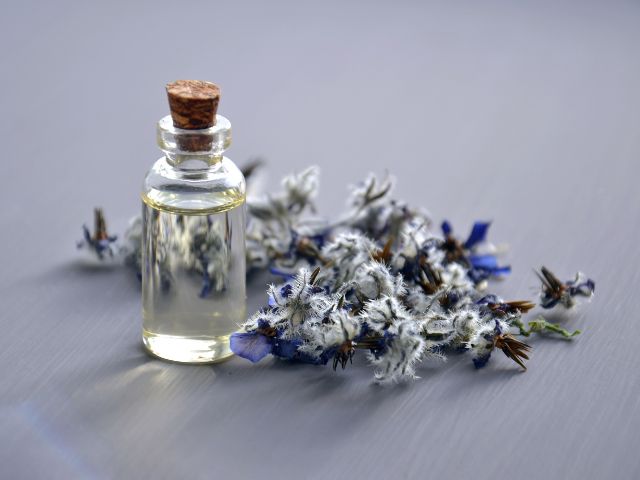
Hydrogen Peroxide: Tackling Stains and Germs
Hydrogen peroxide is a versatile cleaning agent that removes stains and eliminates bacteria. It’s especially effective for whitening grout and disinfecting high-touch areas like faucets and handles.
Castile Soap: A Versatile Cleaning Base
Castile soap is a plant-based soap that’s gentle yet effective. It cuts through grease and grime while being safe for virtually all surfaces.
A little goes a long way, making it an economical addition to your cleaner recipes.
DIY Bathroom Cleaner Recipes
Ready to get started? Here are some tried-and-true recipes to help you clean every corner of your bathroom, from tiles to toilets.
All-Purpose Bathroom Cleaner
This all-purpose cleaner is a staple for tackling countertops, sinks, and other surfaces.
Ingredients Needed
- 1 cup white vinegar
- 1 cup water
- 10 drops of your favourite essential oil
Step-by-Step Instructions
- Combine the vinegar and water in a spray bottle.
- Add the essential oil and shake well to mix.
- Spray onto surfaces and wipe clean with a cloth.
Tile and Grout Cleaner
This recipe makes scrubbing tiles and grout less of a chore.
Ingredients Needed
- 1/2 cup baking soda
- 1/4 cup hydrogen peroxide
- 1 teaspoon liquid Castile soap
Step-by-Step Instructions
- Mix all ingredients into a paste.
- Apply the paste to grout and tiles using a toothbrush or sponge.
- Let it sit for 10 minutes before scrubbing and rinsing with water.
Toilet Bowl Cleaner
Keep your toilet fresh and clean with this simple yet effective cleaner.
Ingredients Needed
- 1/2 cup baking soda
- 1/4 cup white vinegar
- 10 drops of tea tree essential oil
Step-by-Step Instructions
- Sprinkle baking soda into the toilet bowl.
- Add the vinegar and let it fizz for a few minutes.
- Scrub with a toilet brush, focusing on stubborn stains.
- Flush to rinse away the cleaner and debris.
Sink and Tub Scrub
This scrub is perfect for removing grime and soap scum from sinks and tubs.
Ingredients Needed
- 1 cup baking soda
- 1/4 cup liquid Castile soap
- 5 drops of eucalyptus essential oil
Step-by-Step Instructions
- Mix the baking soda and Castile soap into a thick paste.
- Add the essential oil for fragrance and antibacterial properties.
- Apply to sinks or tubs using a sponge or cloth.
- Rinse thoroughly and wipe dry for a sparkling finish.
Tips for Using Homemade Bathroom Cleaners Effectively
Homemade cleaners are versatile and easy to use, but following some tips can maximise their effectiveness.
Application Techniques for Different Surfaces
Each bathroom surface has unique cleaning needs. Use these tips to get the best results without causing damage.
Cleaning Glass and Mirrors
For streak-free glass, spray a mixture of vinegar and water onto the surface, then wipe with a microfiber cloth. Avoid paper towels, as they can leave lint behind.
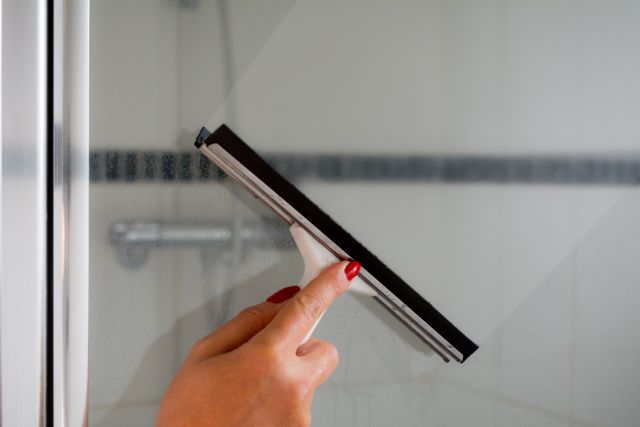
Maintaining Tiles and Grout
Scrub grout with a baking soda paste and rinse thoroughly. For tiles, a gentle wipe with an all-purpose cleaner is often enough to maintain their shine.
Handling Porcelain Fixtures
Use non-abrasive cleaners to avoid scratching porcelain sinks, tubs, and toilets. A soft sponge is your best friend for these delicate surfaces.
Safety Tips and Precautions
Even natural ingredients should be used with care. Follow these precautions to stay safe while cleaning.
Avoiding Ingredient Interactions
Never mix hydrogen peroxide with vinegar or bleach, as this can produce harmful gases. Stick to recipes that combine safe, compatible ingredients.
Safe Storage and Handling
Store your homemade cleaners in clearly labelled containers out of reach of children and pets. Keep them in a cool, dark place to preserve their effectiveness.
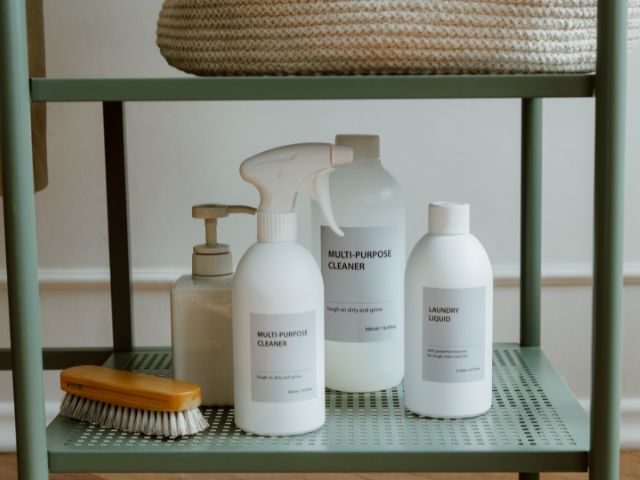
Eco-Friendly Bathroom Cleaning Practices
Beyond the cleaners themselves, your cleaning habits can also reduce environmental impact. Consider these tips for a greener approach.
Reducing Water Usage During Cleaning
Turn off the tap when scrubbing or applying cleaner. Use a bucket or a spray bottle to control water use, ensuring you clean effectively without waste.
Disposing of Waste Responsibly
When cleaning tools or leftover solutions are no longer usable, dispose of them responsibly. Avoid flushing anything down the toilet except for the cleaner itself.
Professional Insights from NuDesign Bathroom Renovations
As experts in bathroom design and renovation, NuDesign understands the importance of a clean, well-maintained space. Here are some professional tips to complement your cleaning efforts.
Why Cleanliness is Key to a Beautiful Bathroom
A clean bathroom enhances the space’s aesthetic and functionality. Regular cleaning prevents buildup, which can degrade materials over time, ensuring your bathroom looks and performs its best.
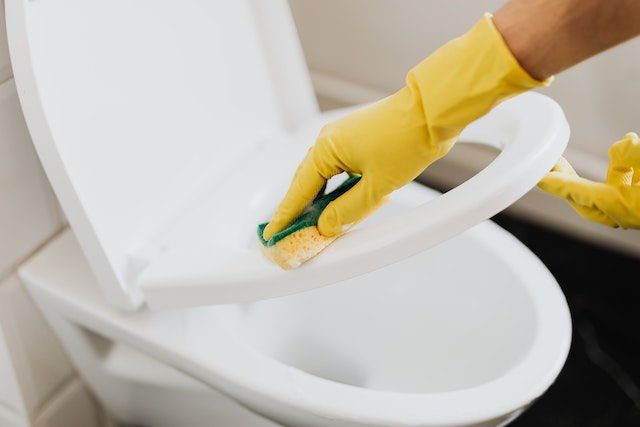
Expert Tips for Maintaining Renovated Bathrooms
After a renovation, keeping the space clean helps preserve its fresh appearance. Avoid abrasive cleaners that could damage finishes, and focus on gentle, natural alternatives like the recipes provided above.
Frequently Asked Questions About Homemade Bathroom Cleaners
Curious about how to make and use homemade cleaners? Here are answers to common questions to set your mind at ease.
Can Vinegar Damage Bathroom Surfaces?
Vinegar is safe for most surfaces but should not be used on natural stone, like marble or granite, as its acidity can cause etching. Stick to baking soda-based solutions for these areas.
How Long Can Homemade Cleaners Be Stored?
Most homemade cleaners can be stored for up to a month, but always check for separation or changes in scent. Discard and remake if they seem off.
Are These Recipes Safe for Homes with Pets?
Yes, these recipes are generally safe for pets, but avoid essential oils like tea tree or eucalyptus if you have cats, as they can be harmful to them. Stick to pet-safe options like lavender or chamomile.
Conclusion
Homemade bathroom cleaners offer a fantastic way to keep your space clean while saving money and protecting the environment.
With simple ingredients and easy recipes, you can transform your bathroom into a fresh, sparkling retreat. So grab your spray bottle, mix up a batch, and enjoy a cleaner home the natural way!


